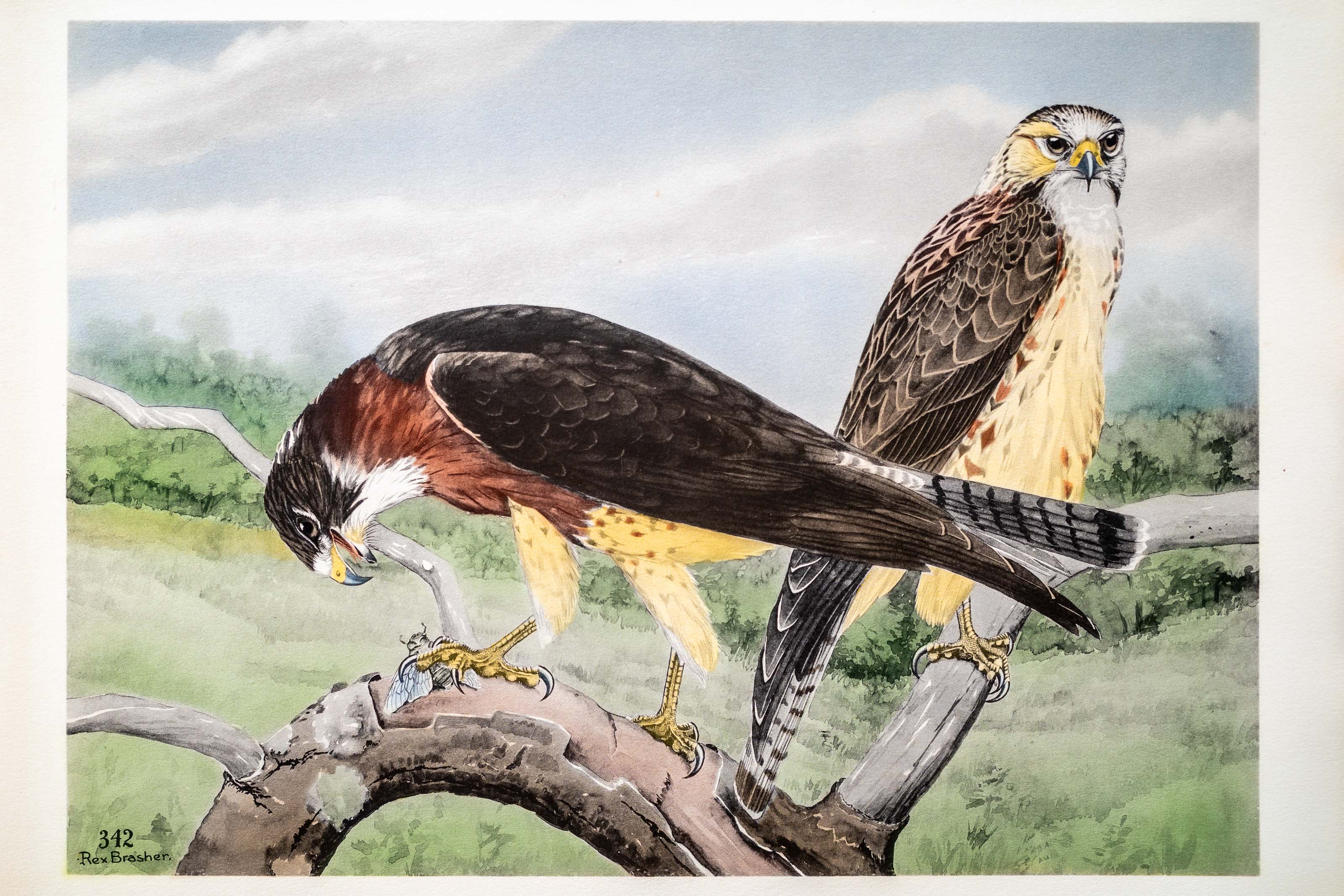

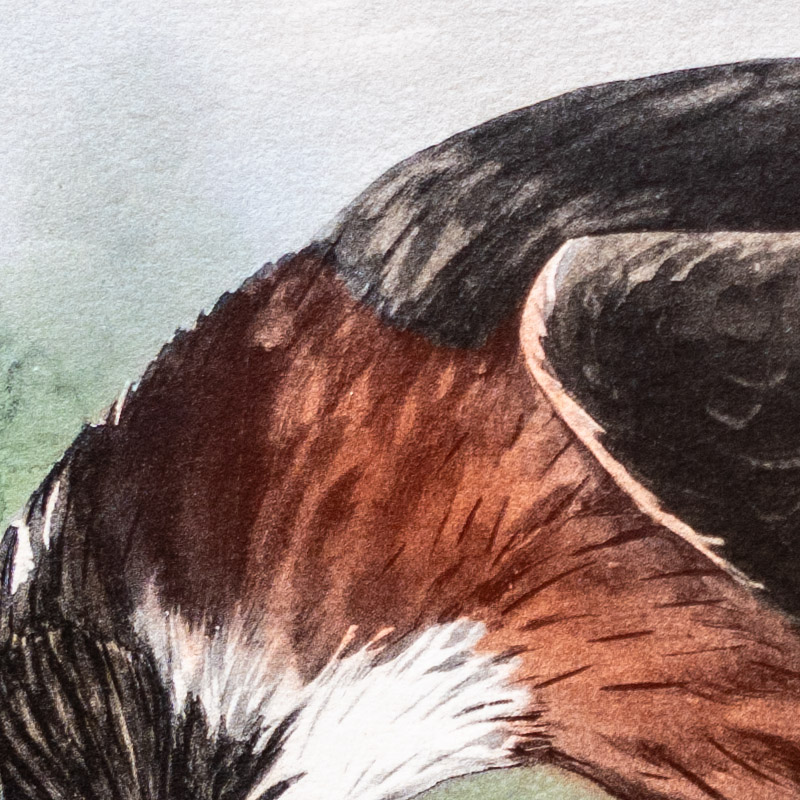
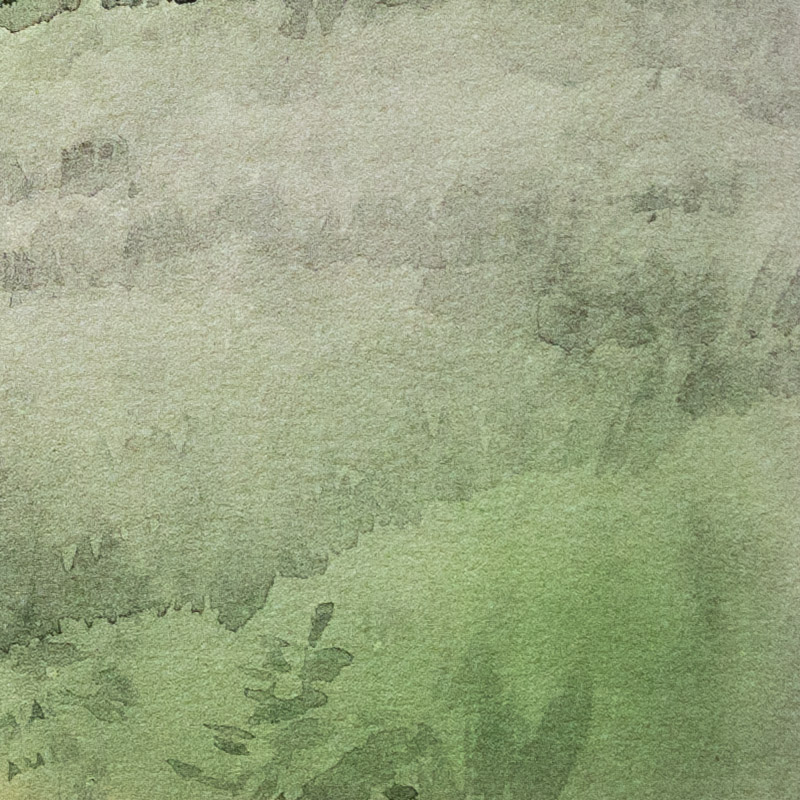
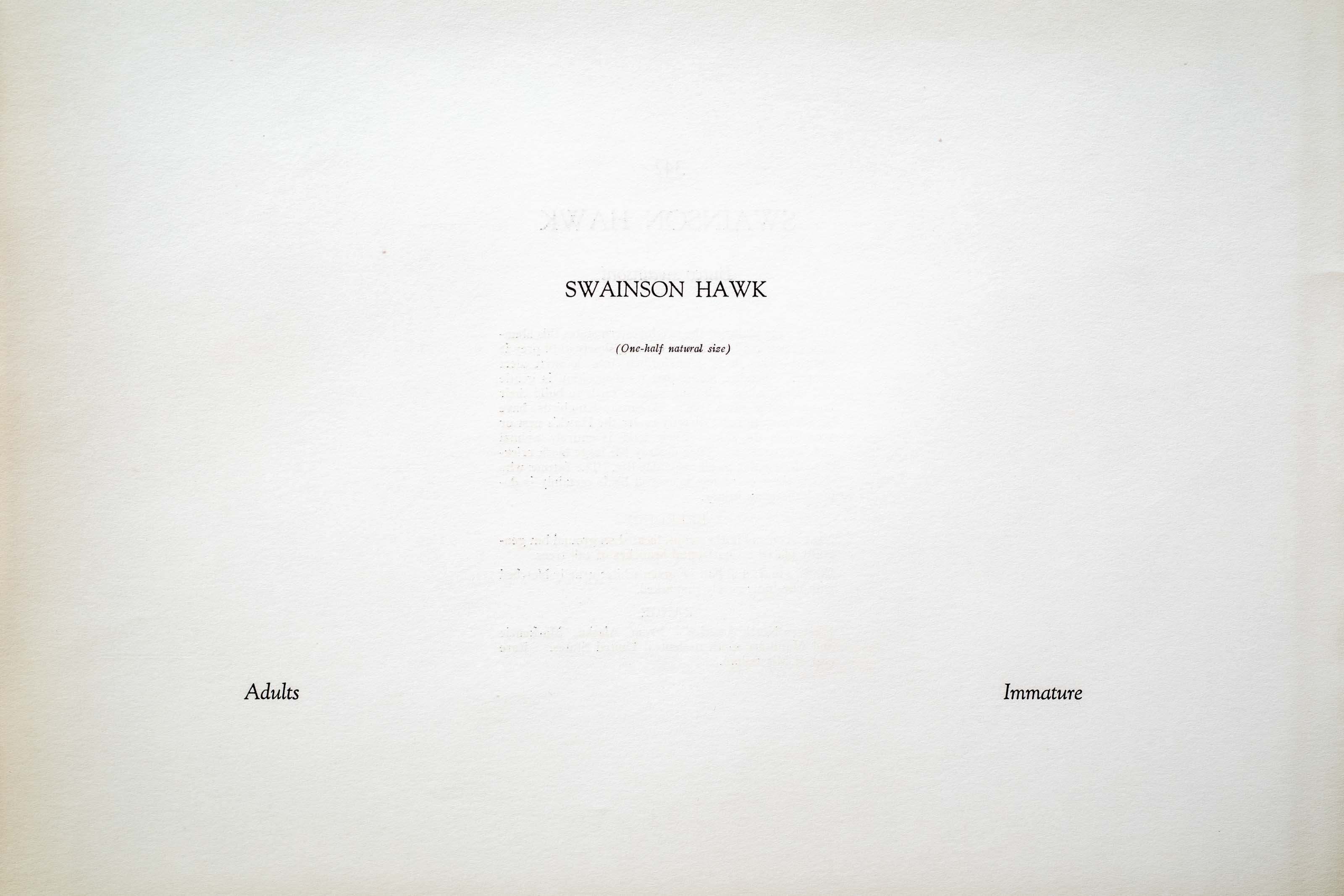
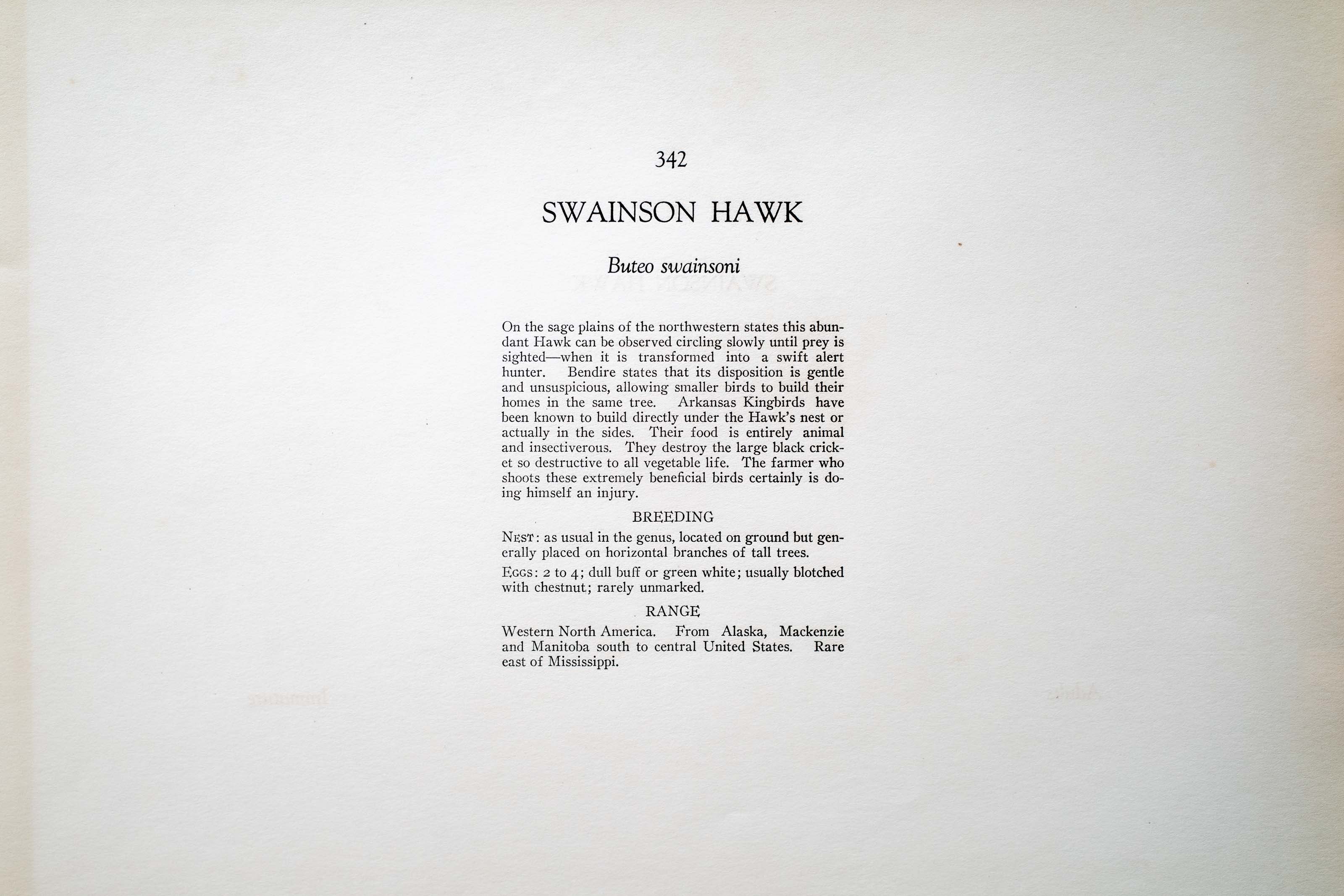

Unknown
1930
5
342
A team of dedicated board members, volunteers, and student interns has published every page in Volume 9. This volume includes 360 images of paintings and lyrical descriptions of birds, now available online for everyone to enjoy anywhere in the world. This is a monumental task. Each volume requires approximately 400 hours to photograph, edit, transcribe, catalog, and publish online. We need your support to complete this work.
If you're tech-savvy, have a good eye, are meticulous with details, and love structured data, please consider volunteering by emailing us at hello@rexbrasher.org.
We encourage all bird lovers and supporters to consider a monetary donation to support our mission to make Rex's work available for everyone. You can provide a one-time or recurring donation online.
On the sage plains of the northwestern states this abundant Hawk can be observed circling slowly until prey is sighted — when it is transformed into a swift alert hunter. Bendire states that its disposition is gentle and unsuspicious, allowing smaller birds to build their homes in the same tree. Arkansas Kingbirds have been known to build directly under the Hawk's nest or actually in the sides. Their food is entirely animal and insectiverous. They destroy the large black cricket so destructive to all vegetable life. The farmer who shoots these extremely beneficial birds certainly is doing himself an injury.
NEST: as usual in the genus, located on ground but generally placed on horizontal branches of tall trees.
EGGS: 2 to 4; dull buff or green white; usually blotched with chestnut; rarely unmarked.
Western North America. From Alaska, Mackenzie and Manitoba south to central United States. Rare east of Mississippi.